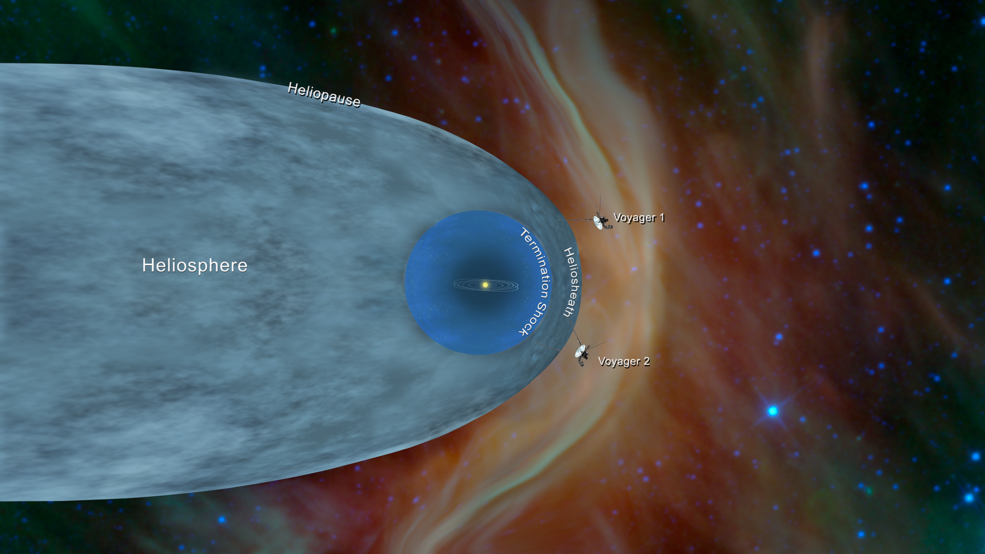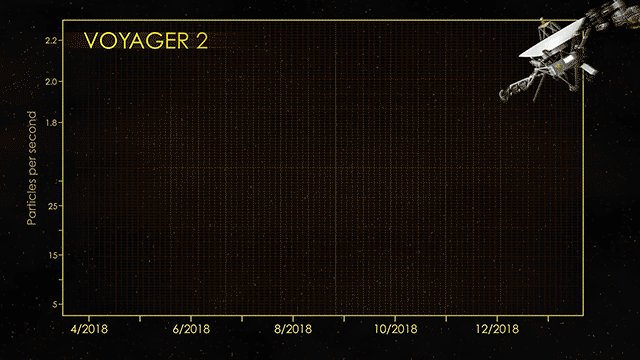The NASA probe was launched in 1977 and has now joined its twin, Voyager 1, to begin a new chapter of interstellar discovery

Carolyn Porco, planetary scientist and lead of the NASA Cassini mission imaging team, probably said it best:
Voyager 1 made us an interstellar species; 6 yrs later, Voyager 2 makes it look easy. While these are historic, soul-stirring achievements, I am most happy right now that Ed Stone, the best Project Scientist who ever lived, lived to see this moment.
via Twitter
It can be easy to lump today’s announcement about Voyager 2 entering interstellar space as “simply” another magnificent science achievement for NASA — but that would be too narrow; the Voyager spacecraft have become so much more. They represent humanity at our best; our will to explore, our need to push boundaries, our excitement for expanding the human experience far beyond terrestrial shores. They also act as a means to understand the sheer scale of our solar system. And what better way to measure that scale than with a human life.
Ed Stone started working on the Voyager Program in 1972 as a project scientist. Now, at 82 years old, he’s still working on the Voyagers nearly half a century later as they continue to send back data from the frontier beyond our solar system. When we start measuring space missions in half-centuries, or missions that have lasted entire careers, it becomes clear how far we’ve come. Not only does NASA build really tough space robots that surpass expectations routinely, returning new discoveries and revelations about the universe that surrounds us, the Voyagers have become a monument to the essence of being human, something with which Stone would probably agree.
Although most of the instruments aboard the Voyagers are no longer functional, both missions are still returning data from the shores of the interstellar ocean and, on Nov. 5, mission controllers noticed that one of Voyager 2’s instruments, the Plasma Science Experiment (PSE), had detected a rapid change in its surrounding environment. Used to being immersed the comparatively warm and tenuous solar wind flowing past it, its plasma measurements detected a change. The spacecraft had passed into a region of space where the plasma was now denser and cooler. Three other particle experiments also detected a dramatic change; solar wind particle counts were down, but cosmic ray counts precipitously increased. Voyager 1’s PSE failed in 1980, so couldn’t measure this boundary when it entered interstellar space in 2012, so Voyager 2 is adding more detail about what we can expect happens when a spacecraft travels from the heliosphere, through the heliopause and into interstellar space.

“There is still a lot to learn about the region of interstellar space immediately beyond the heliopause,” said Stone in a NASA statement.
The heliosphere can be imagined as a vast magnetized bubble that is generated by the Sun. This bubble is inflated by the solar wind, a persistent stream of solar particles that ebb and flow with the Sun’s 11-year cycle. When the Sun is at its most active, the bubble expands; at its least active, it contracts. This dynamic solar sphere of influence affects the flux of high-energy cosmic rays entering the inner solar system, but the physics at this enigmatic boundary is poorly understood. With the help of the Voyagers, however, we’re getting an in-situ feel for the plasma environment at the boundary of where the Sun’s magnetism hits the interstellar medium.
To achieve this, however, we had to rely on two spacecraft that were launched before I was born, in 1977. Voyager 2 is now 11 billion miles away (Voyager 1 is further away, at nearly 14 billion miles) and it took the probe 41 years just to reach our interstellar doorstep. Neither Voyagers have “left” the solar system, not by a long shot. The gravitational boundary of the solar system is thought to lie some 100,000 AU (astronomical units, where one AU is the average distance from the Earth to the Sun), the outermost limit to the Oort Cloud — a region surrounding the solar system that contains countless billions of icy objects, some of which become the long-period comets that intermittently careen through the inner solar system. Voyager 2 is barely 120 AU from Earth, so as you can see, it has a long way to go (probably another 30,000 years) before it really leaves the solar system — despite what the BBC tells us.
So, tonight, as we ponder our existence on this tiny pale blue dot, look up and think of the two space robot pioneers that are still returning valuable data despite being in deep space for over four decades. I hope their legacy lives on well beyond the life of their radioactive generators, and that the next interstellar spacecraft (no pressure, New Horizons) lives as long, if not longer, than the Voyagers.
Read more about today’s news in my article for HowStuffWorks.com.



